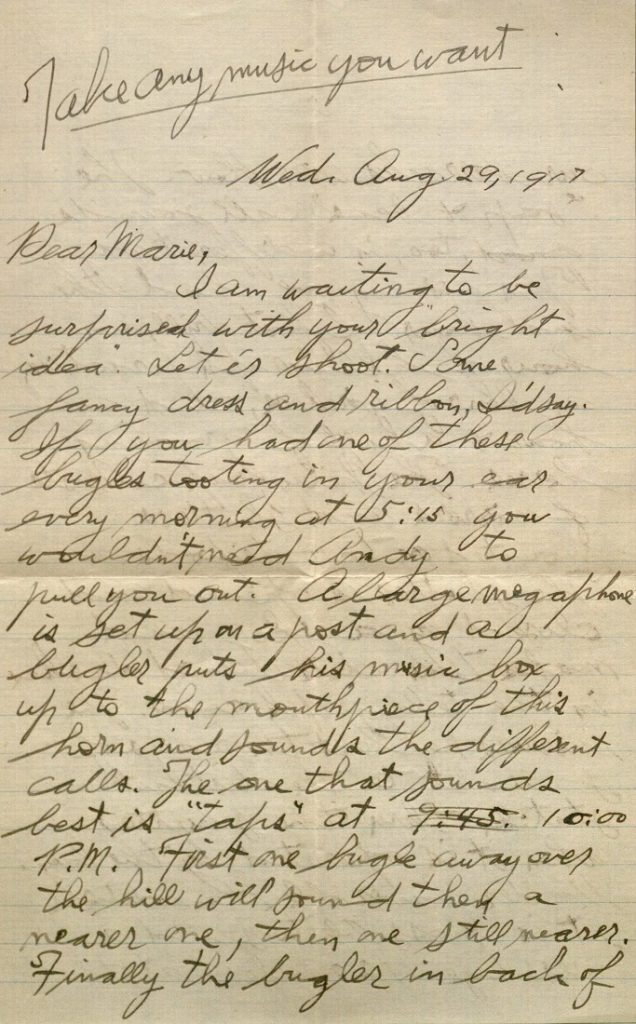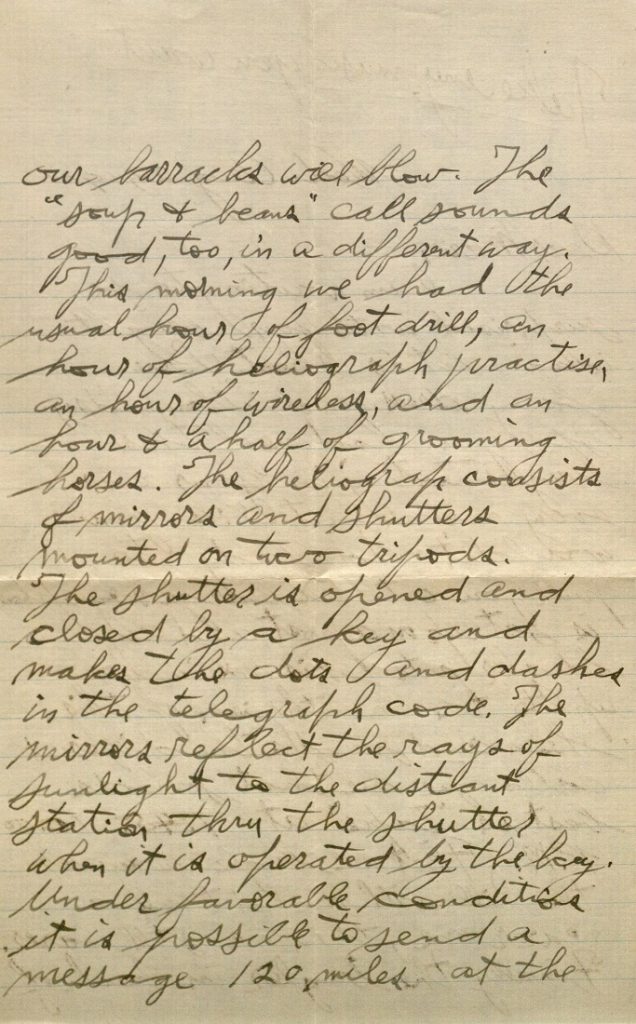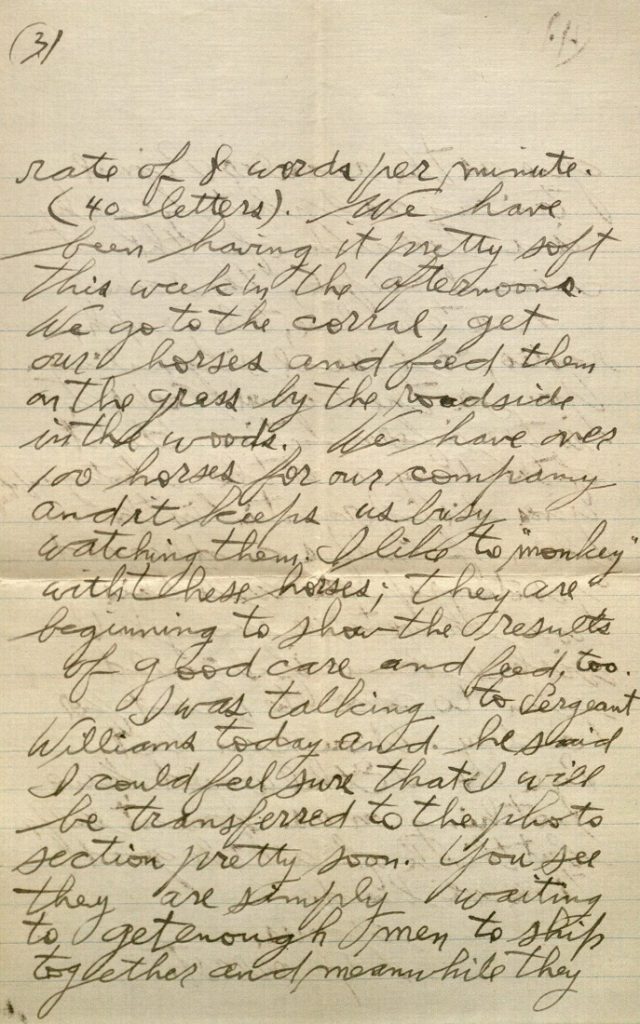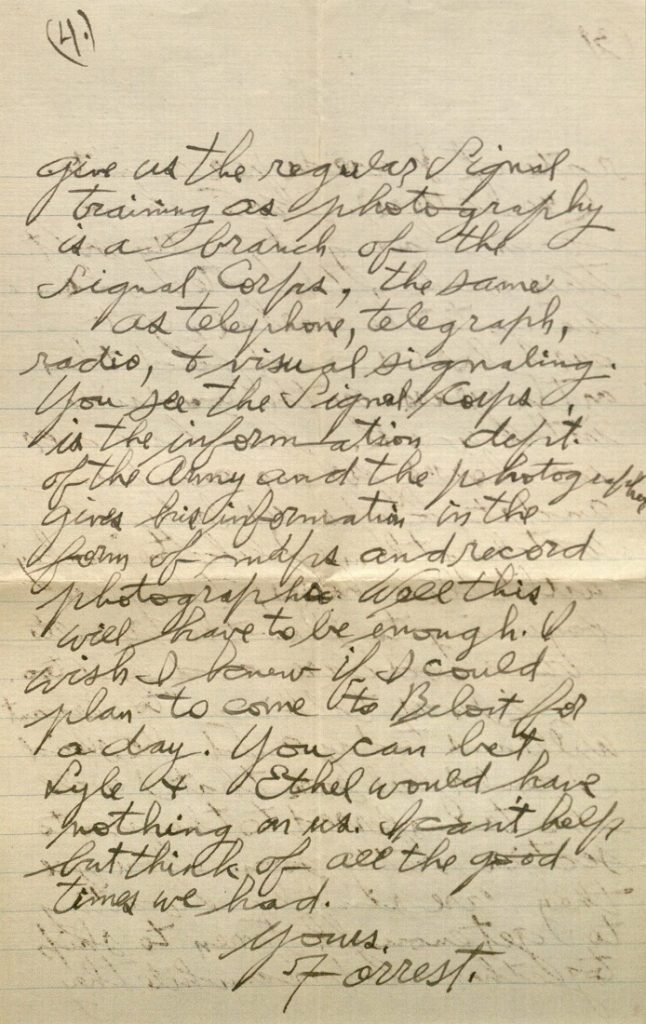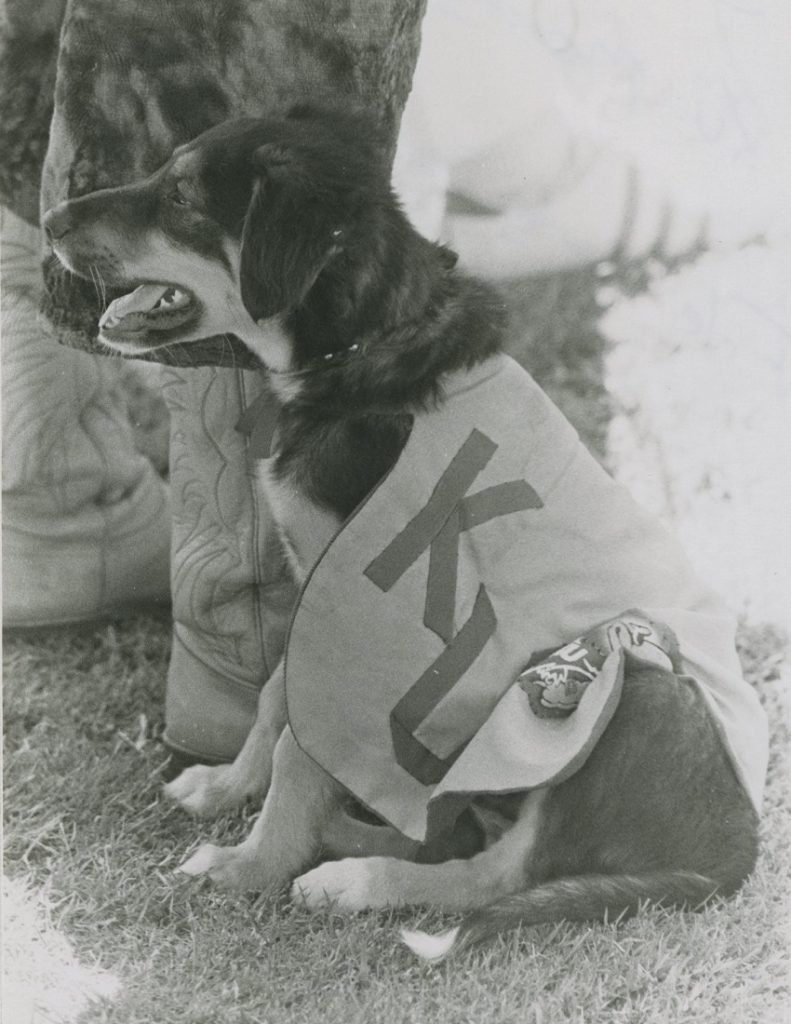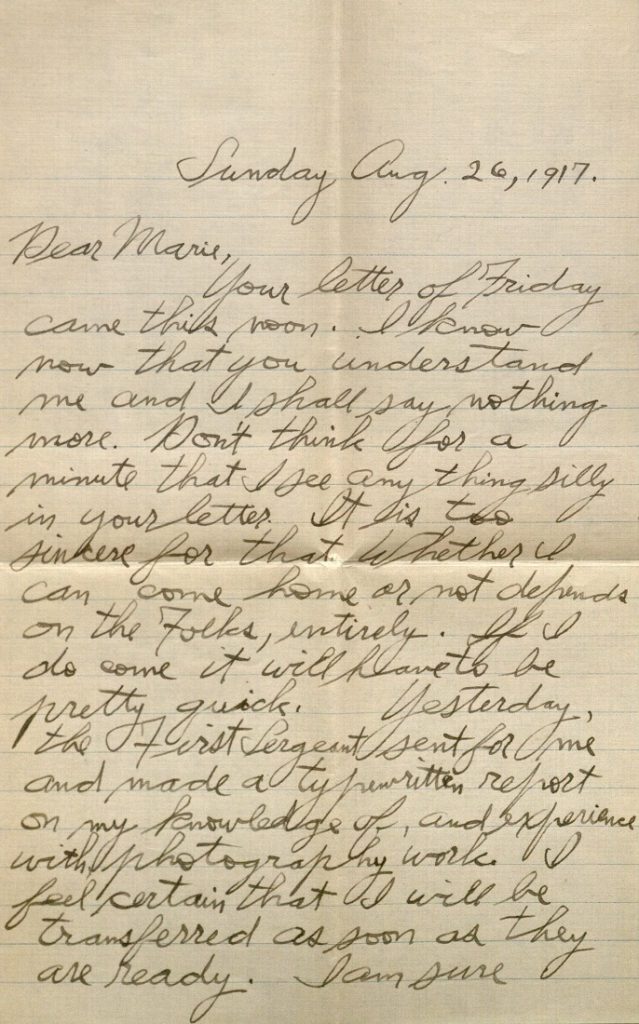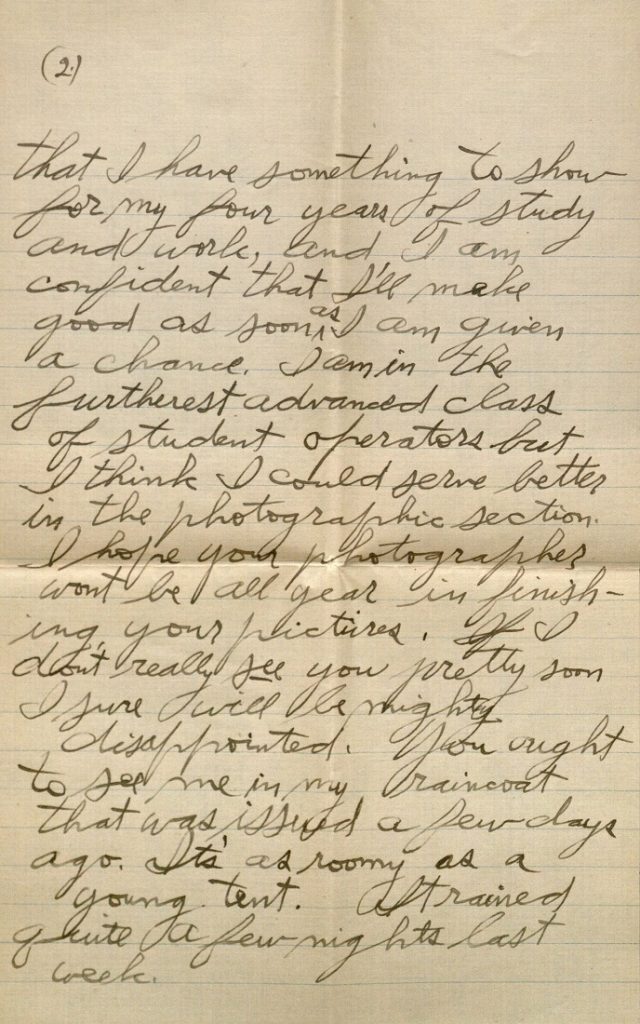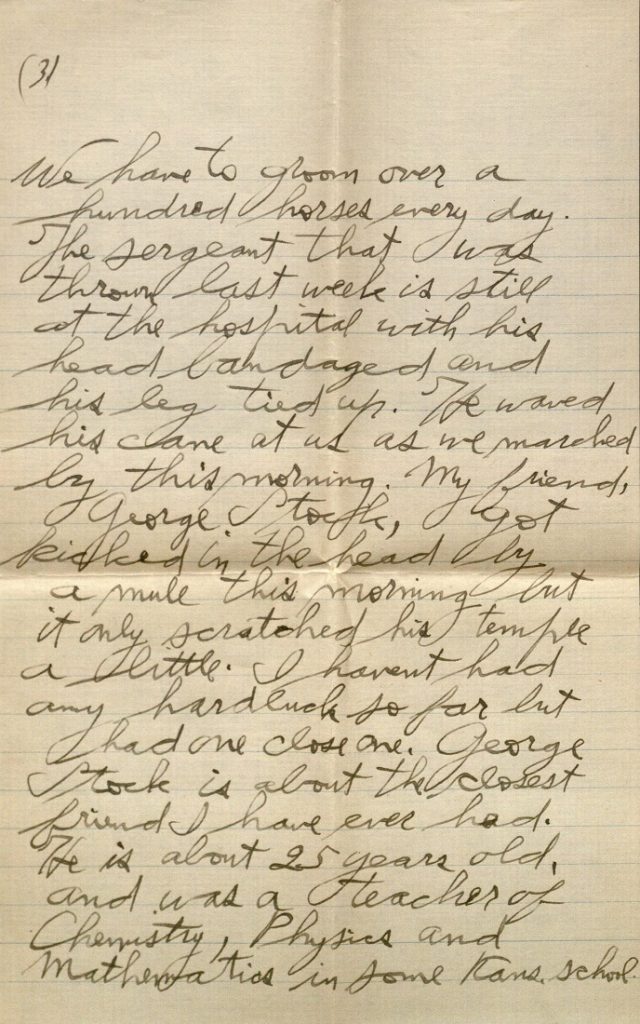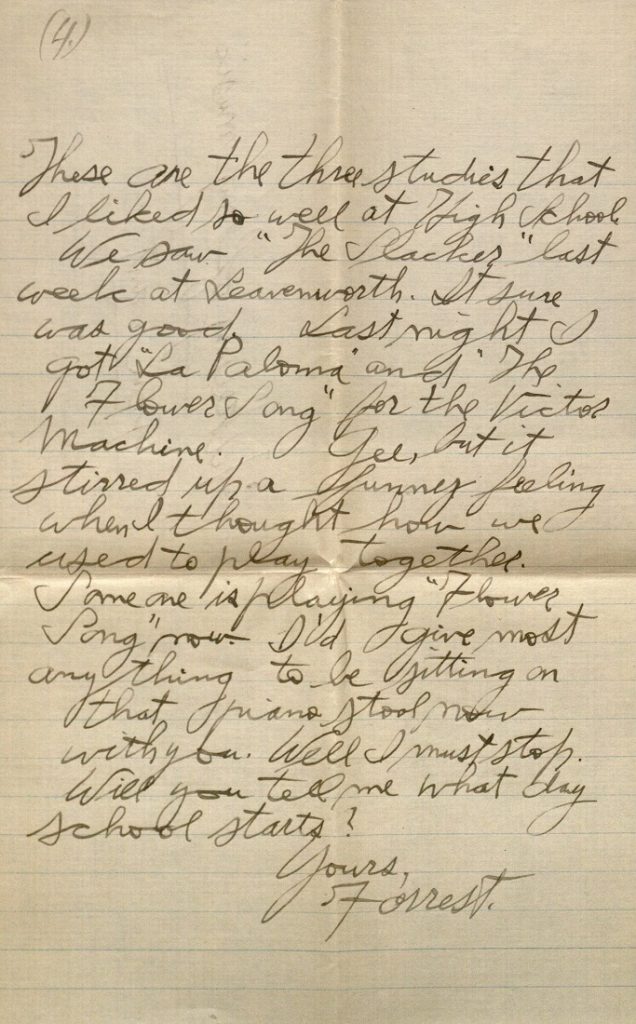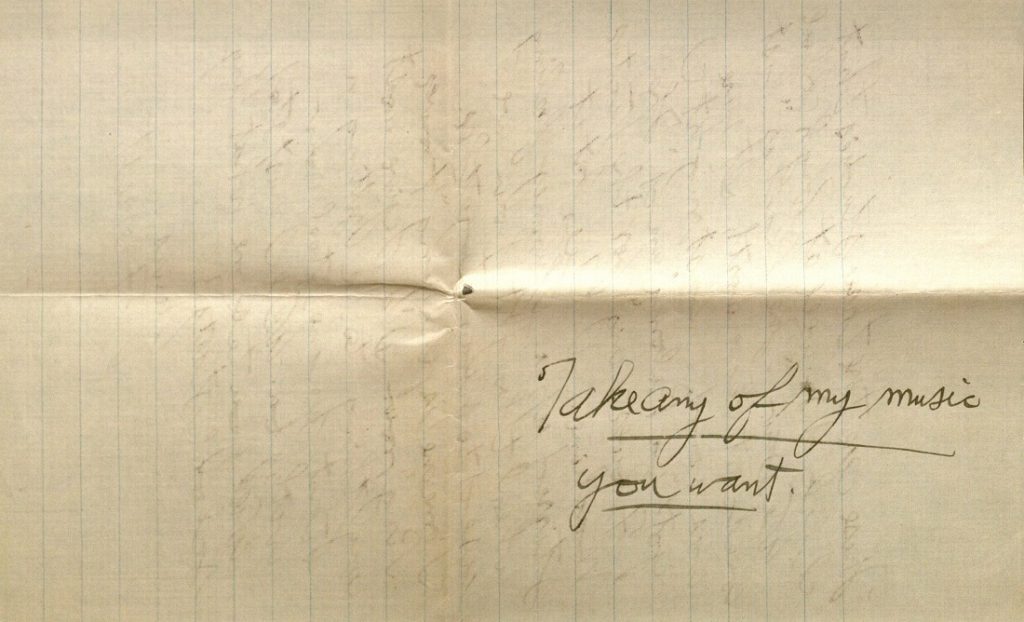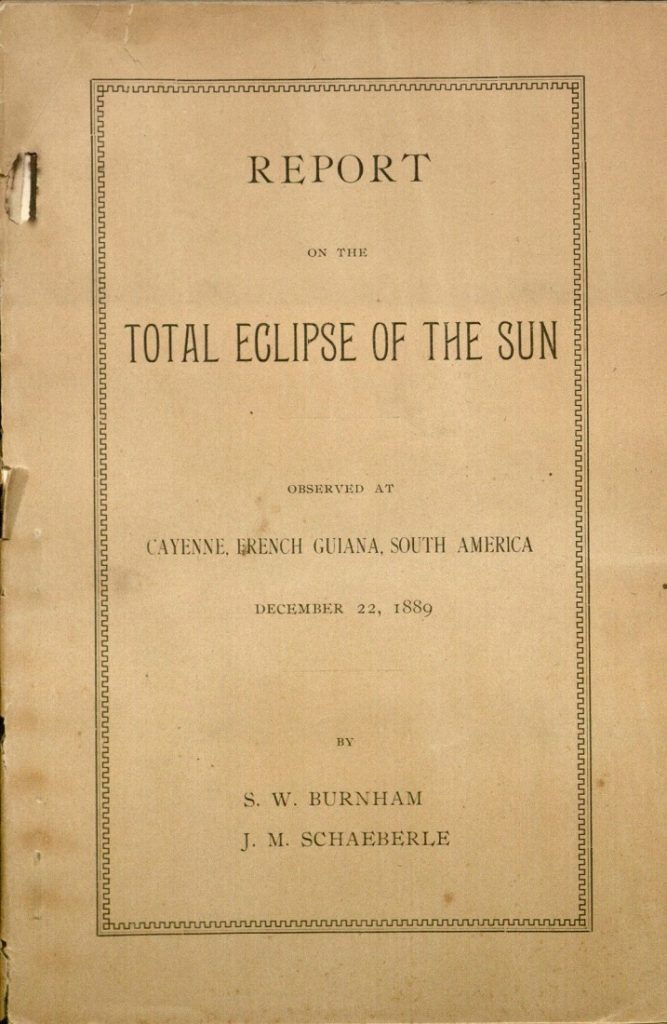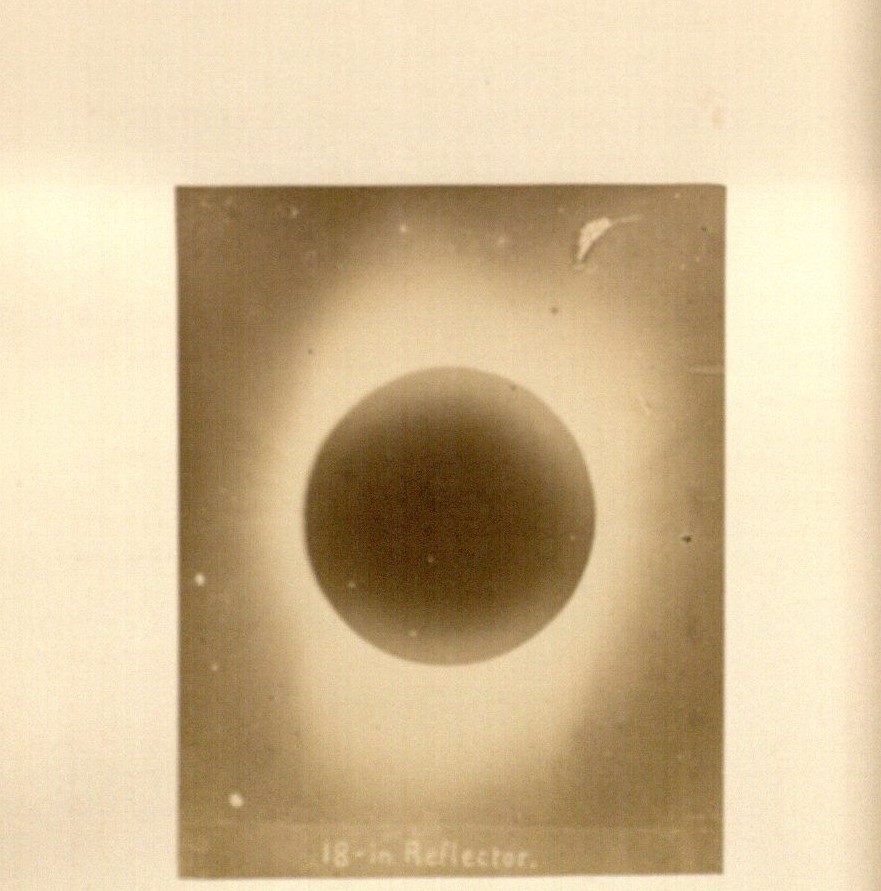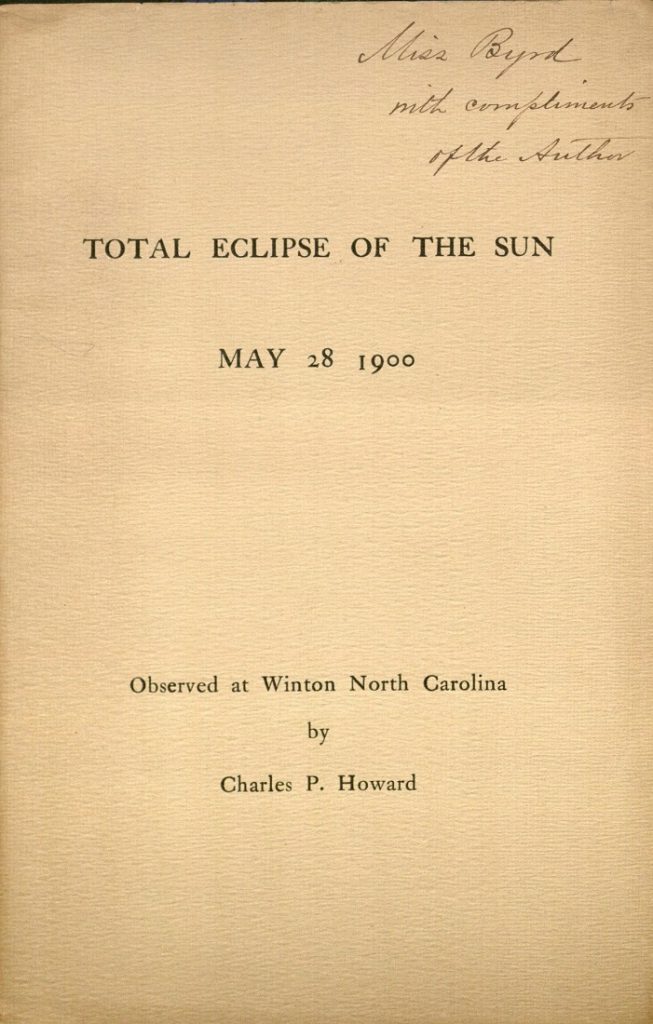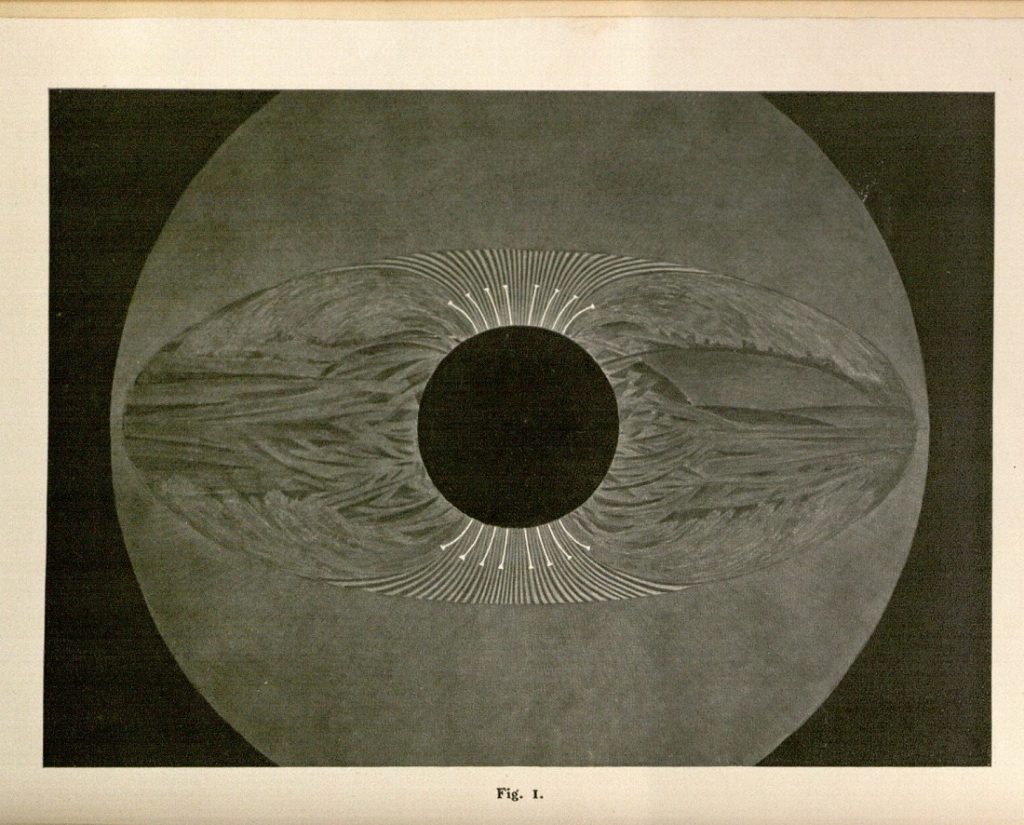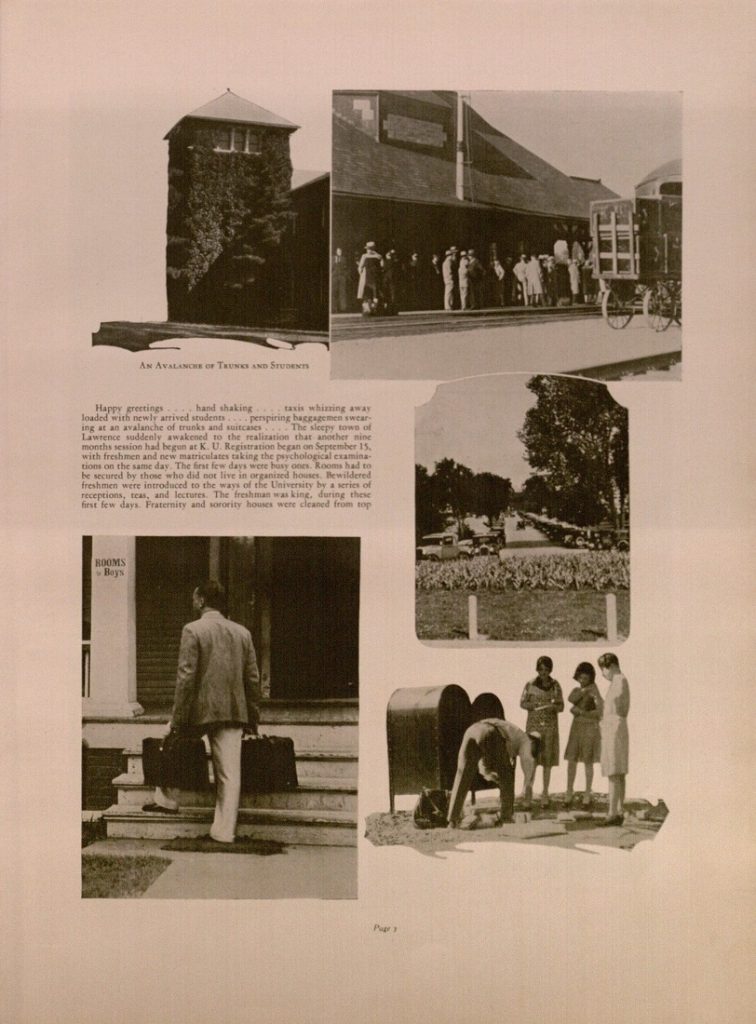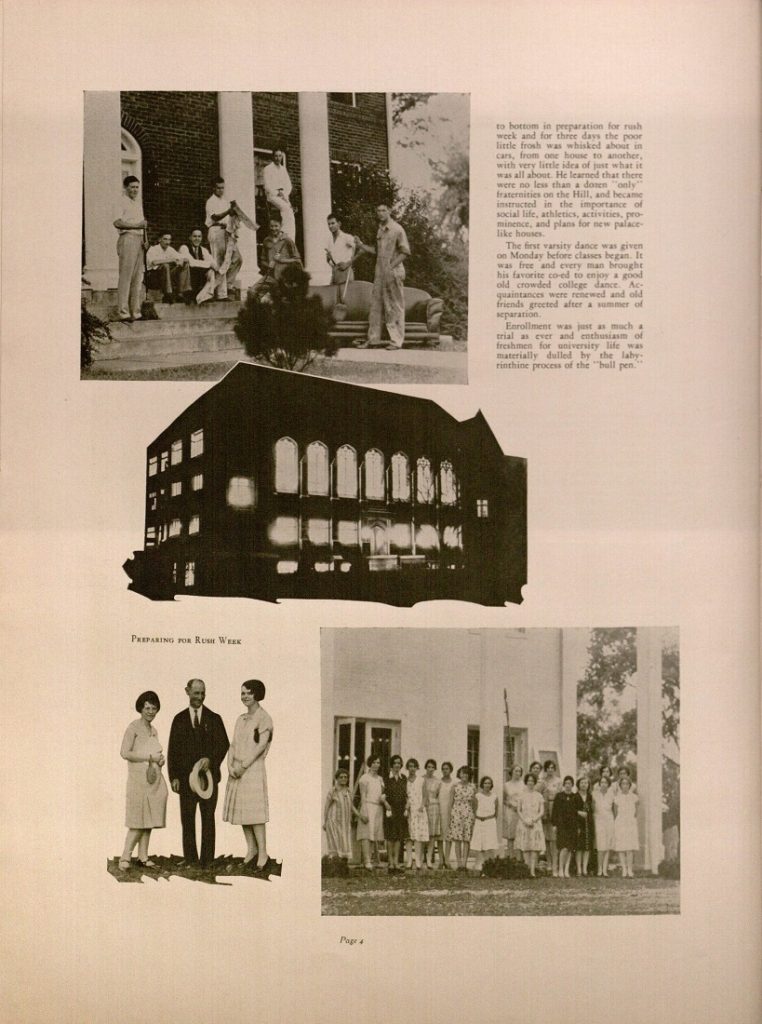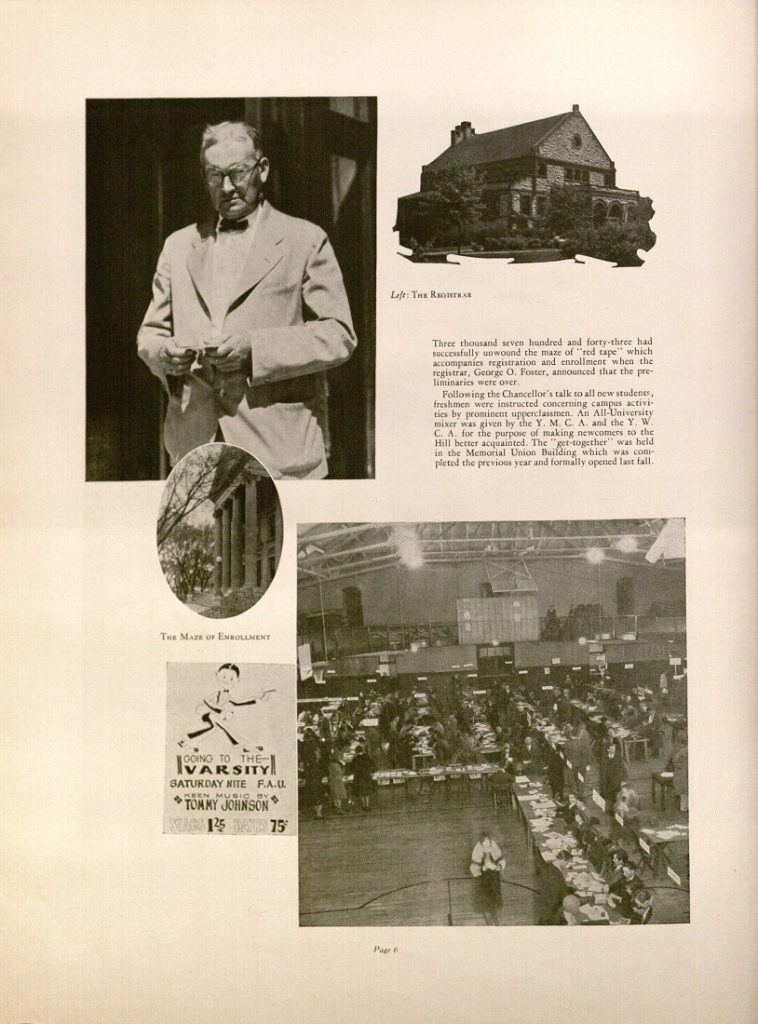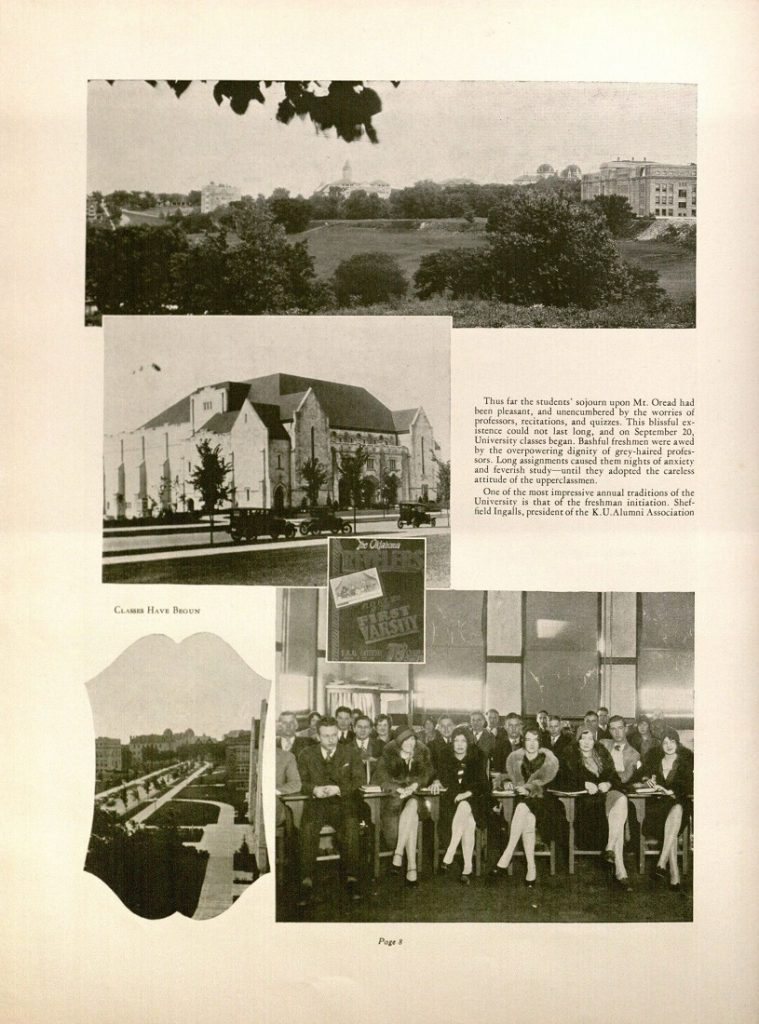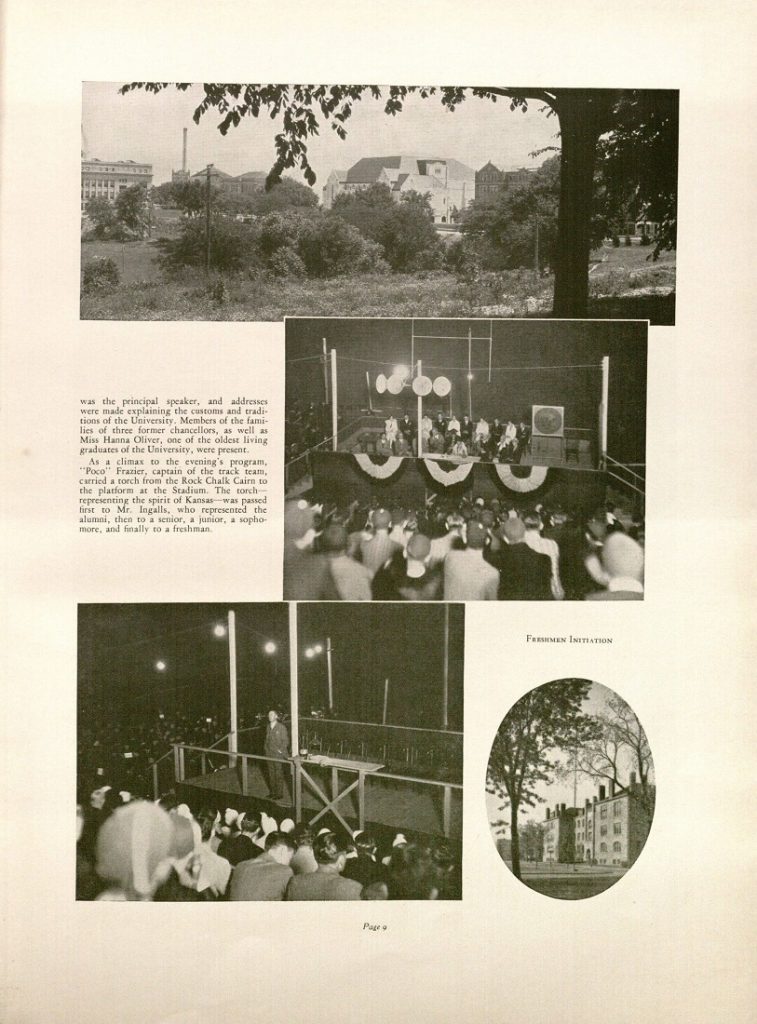World War I Letters of Forrest W. Bassett: August 28-September 3, 1917
August 28th, 2017In honor of the centennial of World War I, we’re going to follow the experiences of one American soldier: nineteen-year-old Forrest W. Bassett, whose letters are held in Spencer’s Kansas Collection. Each Monday we’ll post a new entry, which will feature selected letters from Forrest to thirteen-year-old Ava Marie Shaw from that following week, one hundred years after he wrote them.
Forrest W. Bassett was born in Beloit, Wisconsin, on December 21, 1897 to Daniel F. and Ida V. Bassett. On July 20, 1917 he was sworn into military service at Jefferson Barracks near St. Louis, Missouri. Soon after, he was transferred to Fort Leavenworth, Kansas, for training as a radio operator in Company A of the U. S. Signal Corps’ 6th Field Battalion.
Ava Marie Shaw was born in Chicago, Illinois, on October 12, 1903 to Robert and Esther Shaw. Both of Marie’s parents – and her three older siblings – were born in Wisconsin. By 1910 the family was living in Woodstock, Illinois, northwest of Chicago. By 1917 they were in Beloit.
Frequently mentioned in the letters are Forrest’s older half-sister Blanche Treadway (born 1883), who had married Arthur Poquette in 1904, and Marie’s older sister Ethel (born 1896).
Highlights from this week’s letters include Forrest’s description of various bugle calls (“the one that sounds best is ‘taps’…the ‘soup & beans’ call sounds good, too”), his possible transfer to the “photo section” (“they are simply waiting to get enough men to ship together”), his request for more letters (“I am mighty glad you do like to write because you can’t do it often enough to suit me”) and fudge (“but don’t put any nut meats in it”) from Marie, and his description of watching some “real war motion pictures in the college Riding Hall.”
Click images to enlarge.
Take any music you want
Wed. Aug. 29, 1917
Dear Marie,
I am waiting to be surprised with your “bright idea.” Let ‘er shoot. Some fancy dress and ribbon, I’d say. If you had one of these bugles tooting in your ear every morning at 5:15 you wouldn’t need Andy to pull you out. A large megaphone is set up on a post and a bugler puts his music box up to the mouthpiece of this horn and sounds the different calls. The one that sounds best is “taps” at 9:45 10:00 P.M. First one bugle away over the hill will sound then a nearer one, then one still nearer. Finally the bugles in back of our barracks will blow. The “soup & beans” call sounds good, too, in a different way. This morning we had the usual hour of foot drill, an hour of heliograph practise, an hour of wireless, and an hour and a half of grooming horses. The heliograph consists of mirrors and shutters mounted on two tripods. The shutter is opened and closed by a key and makes the dots and dashes in the telegraph code. The mirrors reflect the rays of sunlight to the distant station thru the shutter when it is operated by the key. Under favorable conditions it is possible to send a message 120 miles at the rate of 8 words per minute (40 letters). We have been having it pretty soft this week in the afternoons. We go to the corral, get our horses and feed them on the grass by the roadside in the woods. We have over 100 horses for our company and it keeps us busy watching them. I like to “monkey” with these horses; they are beginning to show the results of a good care and feed, too.
I was talking to Sergeant Williams today and he said I could feel sure that I will be transferred to the photo section pretty soon. You see they are simply waiting to get enough men to ship together and meanwhile they give us the regular signal training as photography is a branch of the Signal Corps, the same as a telephone, telegraph, radio, and visual signaling, you see the Signal Corps is the information dept. of the Army and the photographer gives his information in the form of maps and record photographs. Well this will have to be enough. I wish I knew if I could plan to come to Beloit for a day. You can bet Lyle and Ethel would have nothing on us. I can’t help but think of all the good times we had.
Yours,
Forrest.
Friday Aug. 31, 1917
Dear Marie,
You said that you love me more every time you think of me, so I’m going to try my best to keep myself in your thoughts. I am mighty glad you do like to write because you can’t do it often enough to suit me. The very most you can do for me is to write the some helpful and inspiring letters. I would like some of your fudge just as often as you want to make it. But don’t put any nut meats in it. You sure are one mighty good girlie to do these things for me. I wish we could eat a dish of fudges together – you know how. Do you remember what a day we had the 4th of July? I am not going to try to come home, I guess. Last night we saw some real war motion pictures in the college Riding Hall. We saw a Zepplin raid over London and saw one machine set on fire by an anti-aircraft gun. The pictures were of all the warning nations and were interesting. I have only seen two motion picture shows since I came here and they were at Leavenworth City. They have free motion pictures here three times a week but I haven’t seen any yet. I know that I liked the shows in Beloit just because they were a good excuse to be with one mighty sweet and lovable little girl. This evening Sergeant Baber played “Flower Song” three times in succession. I went over to the machine to listen and told him that I knew a girl at home that played the piece on the piano, with the phonograph. He looked up and said “Same here, by gosh,” and the look in his eyes told that he was thinking of Her too.
But there is not a single one lucky enough to have a girl like You to think about. Make that photographer get those pictures out “doubletime” as we say in drill. I wrote to Mother to send my film tank so you make get some “snaps” of me sometime. I did the transmitting on the field buzzer today for the class of “ham operators,” of which yours truly is one. Well I must quit.
Yours,
Forrest.
Meredith Huff
Public Services
Emma Piazza
Public Services Student Assistant

